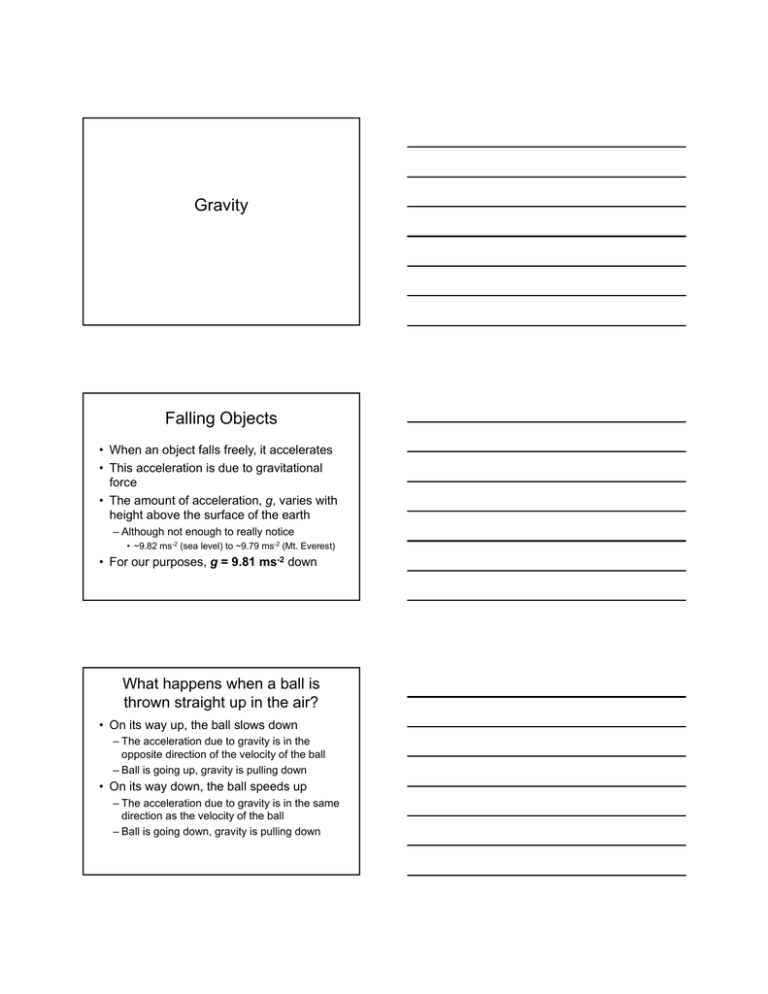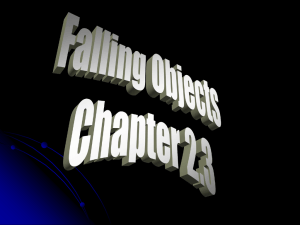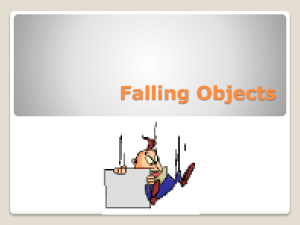Gravity Falling Objects
advertisement

Gravity Falling Objects • When an object falls freely, it accelerates • This acceleration is due to gravitational force • The amount of acceleration, g, varies with height above the surface of the earth – Although not enough to really notice • ~9.82 ms-2 (sea level) to ~9.79 ms-2 (Mt. Everest) • For our purposes, g = 9.81 ms-2 down What happens when a ball is thrown straight up in the air? • On its way up, the ball slows down – The acceleration due to gravity is in the opposite direction of the velocity of the ball – Ball is going up, gravity is pulling down • On its way down, the ball speeds up – The acceleration due to gravity is in the same direction as the velocity of the ball – Ball is going down, gravity is pulling down • That means that the acceleration due to gravity is always down – We probably already suspected that • But, what happens to the ball at the very top of its path? – It stops • What is the acceleration at that point? – It is still the acceleration due to gravity and it is still down – However, rather than changing the speed of the ball, the gravitational acceleration is causing a change in direction Air Resistance • All objects in a vacuum fall with the same rate of acceleration regardless of mass • We see different rates because of air resistance – The air pushes up on the object slowing it down • If we remove the effect of air resistance then the objects will fall at the same rate Terminal Velocity • When a object falls the air is compressed under it and pushes up against the object • At some point, the force of the air is equal to the force of gravity • The object will continue to fall but will no longer accelerate • This maximum velocity is called terminal velocity • The terminal velocity depends on the surface area and mass of the object and the density of air





